Leftovers / The Orienting Stone
Listening to our inner pearl
D. Graham Burnett
“Leftovers” is a column that investigates the cultural significance of detritus.
The black granite Ka’ba, the cubical structure that stands as the holiest center of Islam, features at its eastern vertex a small black stone about the size of a grapefruit, the al-hajar al-aswad, which may or may not have fallen to earth in the time of Adam and Eve. Supported in a silver frame, this obsidian-like cipher structures space for some billion Muslims, standing as it does at the culminating point known as the qibla—the direction to which devout followers of Mohammed address their five daily obeisances. Tradition has it that the rock was once snowy white, and has darkened over time through exposure to human sin.
A snowy white stone that gives shape to the universe: as it happens, we all carry within our skulls the vestige of such a thing, a kind of existentially reversed qibla (this one perspectival, the other metaphysical) that gives us our sense of being at the center of things, the sense that we are upright at the origin point of a three-dimensional space. The “otolithic organs,” as they are known, are a pair of sensors—the utricle and the saccule—nestled in the labyrinthine architecture of the inner ear. Grossly speaking, each consists of a bunch of tiny pebbles (of the white rock known as calcium carbonate) embedded in a gooey wad that sits atop a carpet of delicate hairs. The saccule is roughly vertical in our heads, and the utricle more or less horizontal. Together they orient us in the world, since they work as tiny inertial references: raise your head suddenly (or get in a jerky elevator), and the pebbles of the saccule get momentarily left behind as your skull starts upward; this bends down the hairs against which those pebbles lay, and the sensitive hairs function like switches, sending signals to your brain that you register as a feeling of ascent. The utricle does the same work for motion from side to side, and between them these tiny organs generate the neurological data that give us our normal sense of being in the world. What would it feel like not to have those pebbles? Delete them from a mouse and it spends a lot of time falling over.
Both the utricle and the saccule contain what I have called “pebbles,” but they are little more than mineral crystals really, microscopic sand bound together into a mass by a matrix of protein. Not so the homologous structures in fish, our evolutionary ancestors. They retain, inside their skulls, quite clearly defined, and nearly always large enough to see (and sometimes as large as marbles), healthy little rocks known as otoliths, or “ear stones.” The minute pebbles of our otolithic organs would appear to be the powdered remains of these ancestral lithic pips. It is in this sense that I said we carry within us the “vestiges” of an orienting stone; only our oceanic kin secrete such a thing in an intact form. It is as if, in the course of evolutionary time, our inner al-hajar al-aswad came under the hammer of an angry god. We are, as it were, hanging on after this blow, but our sense of the center may not hold quite as it should.
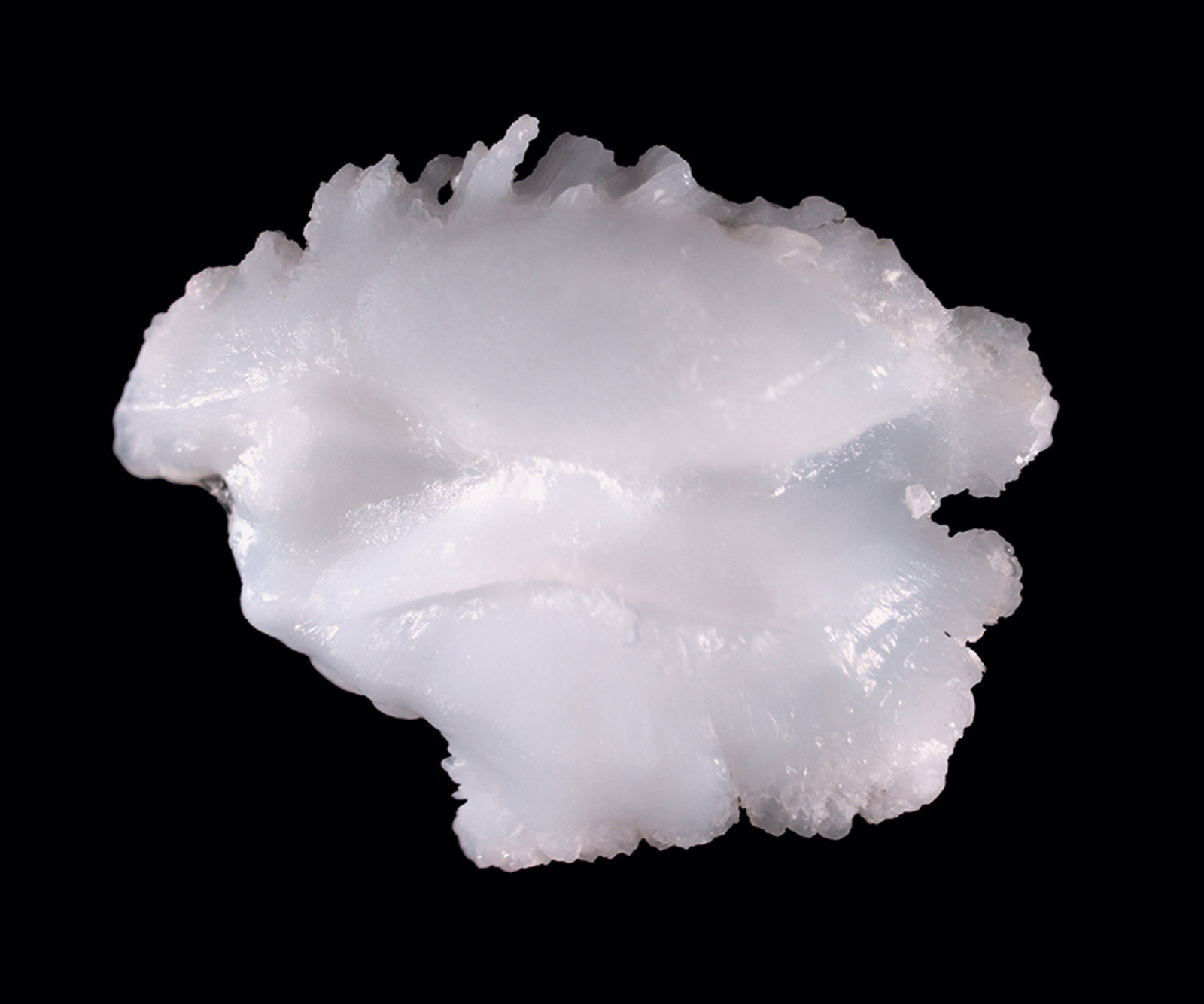
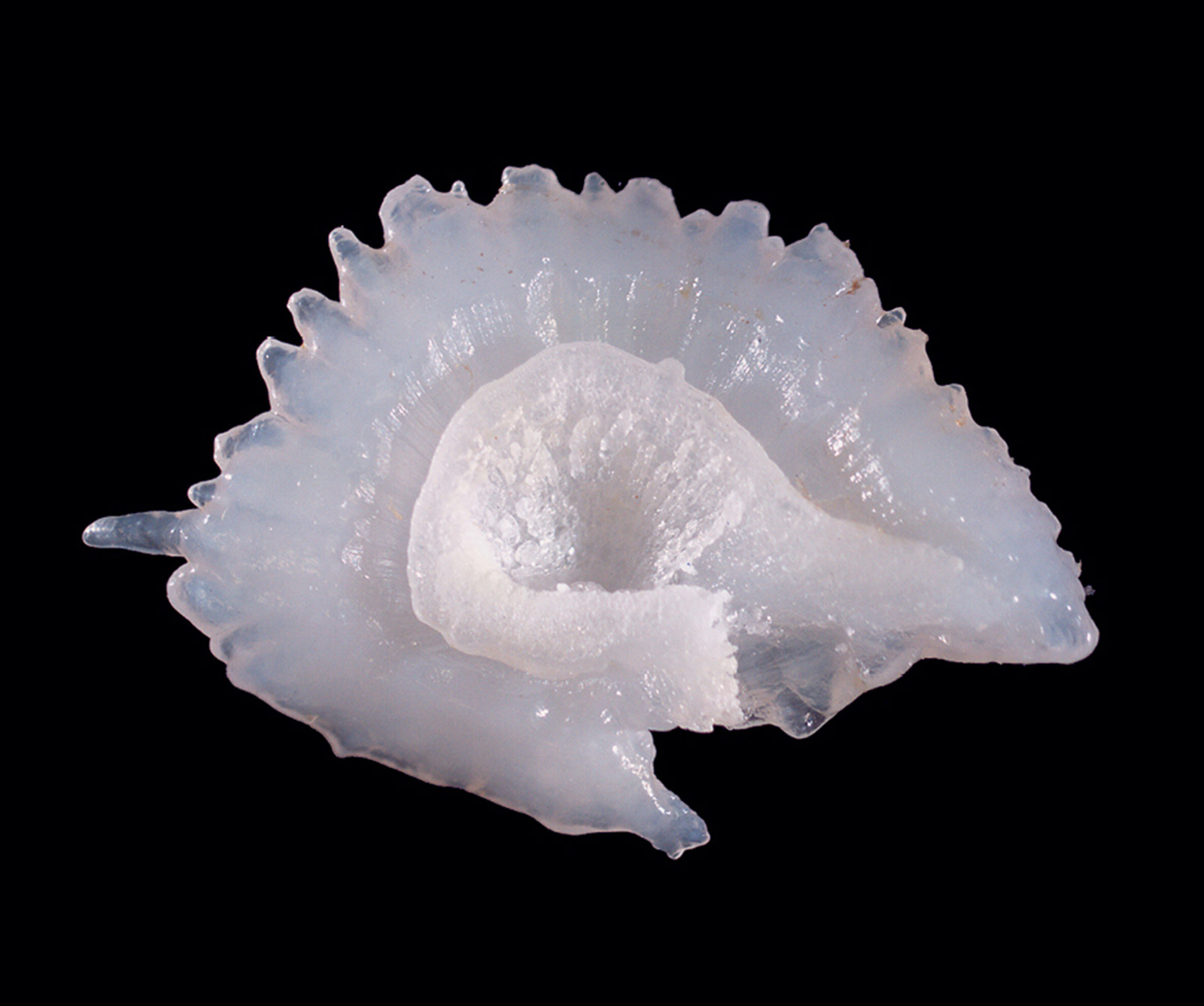
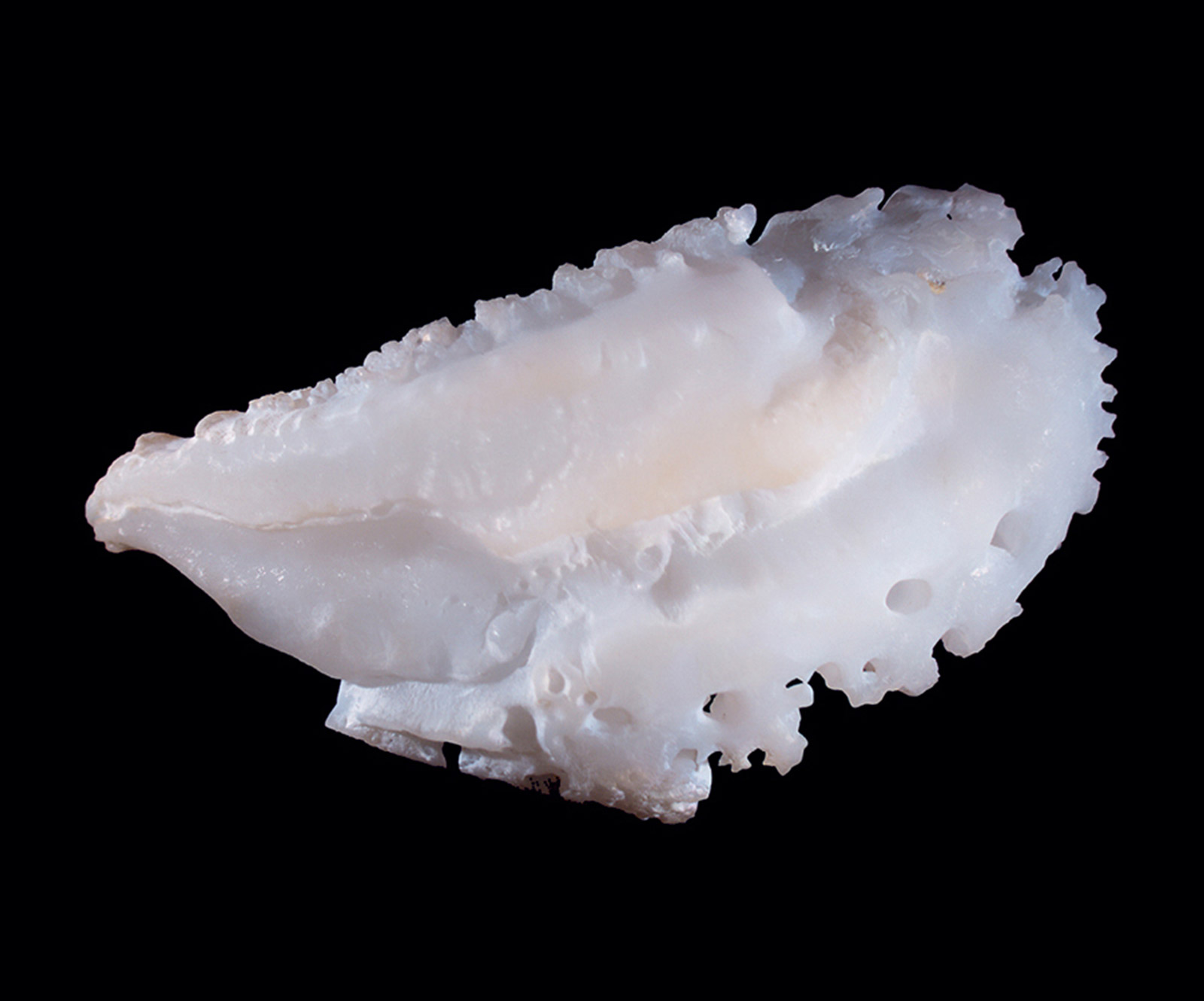
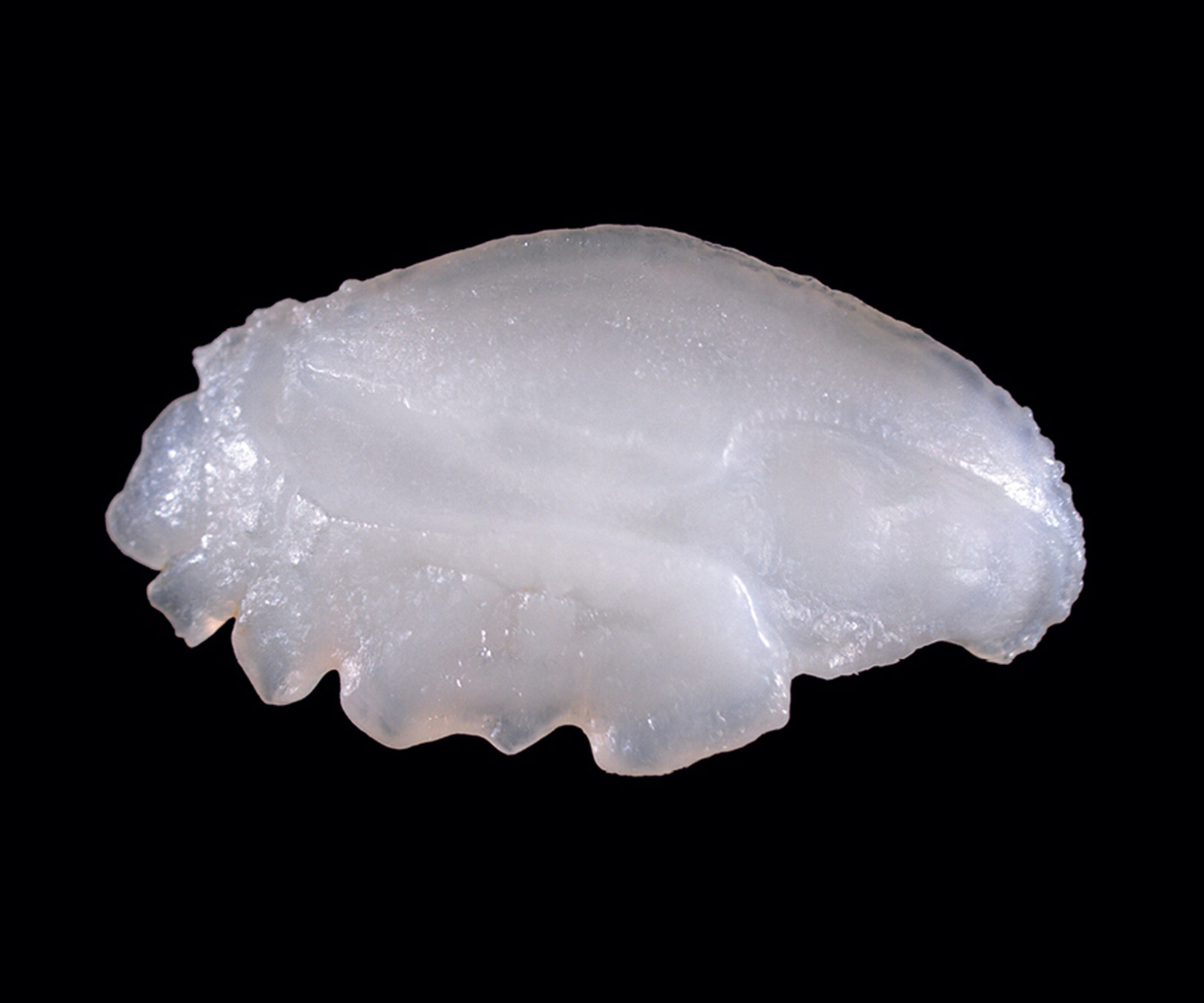
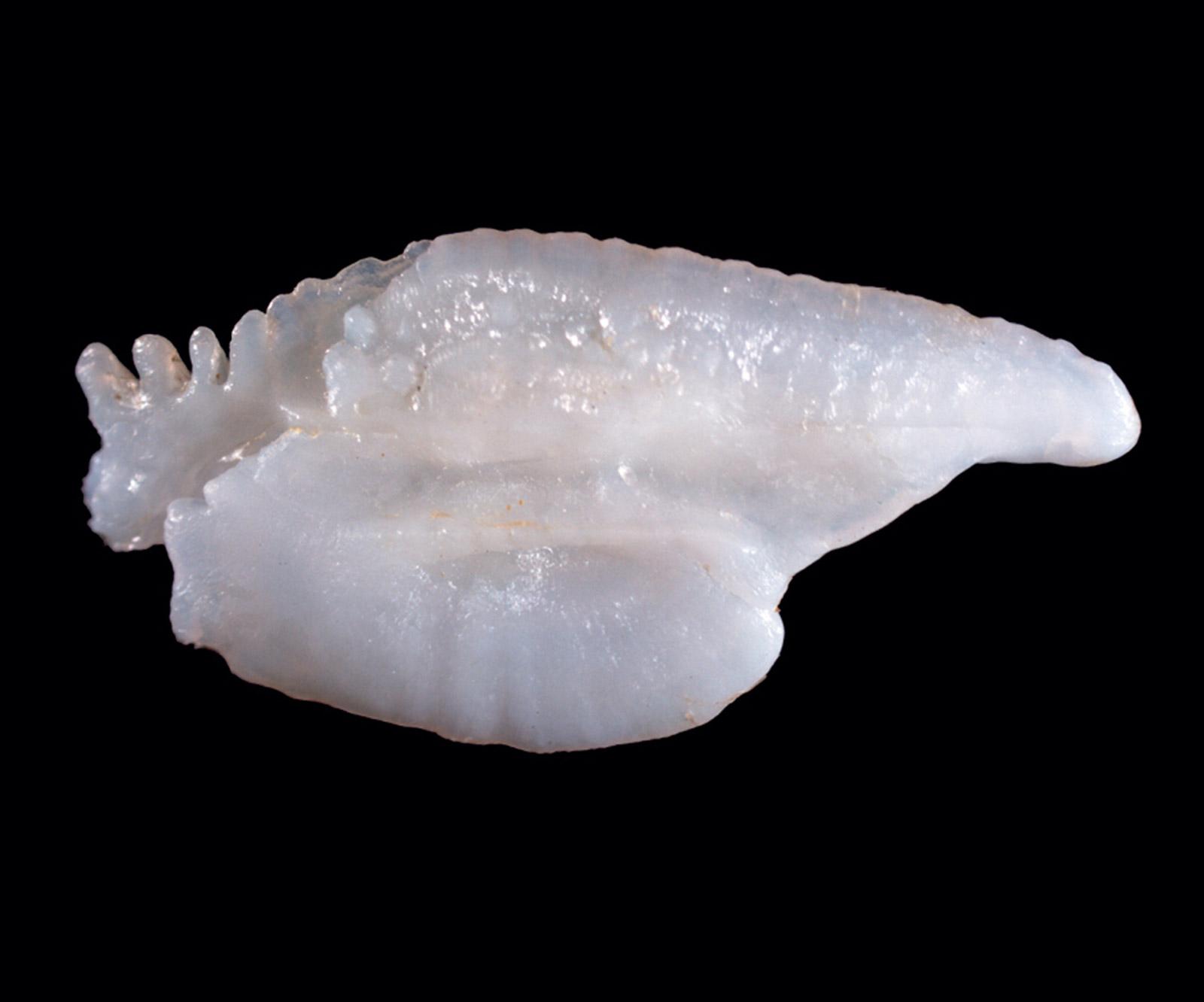
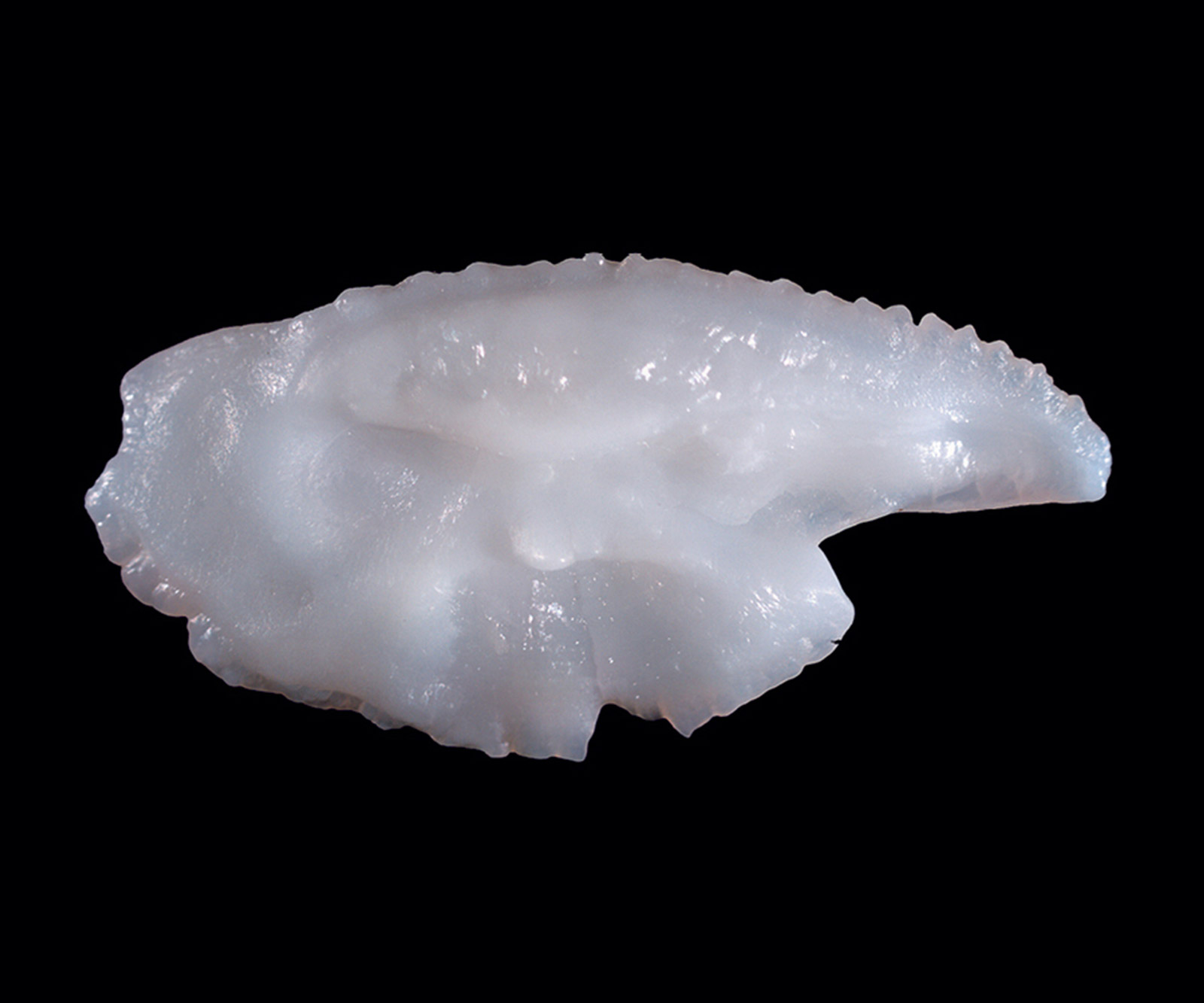
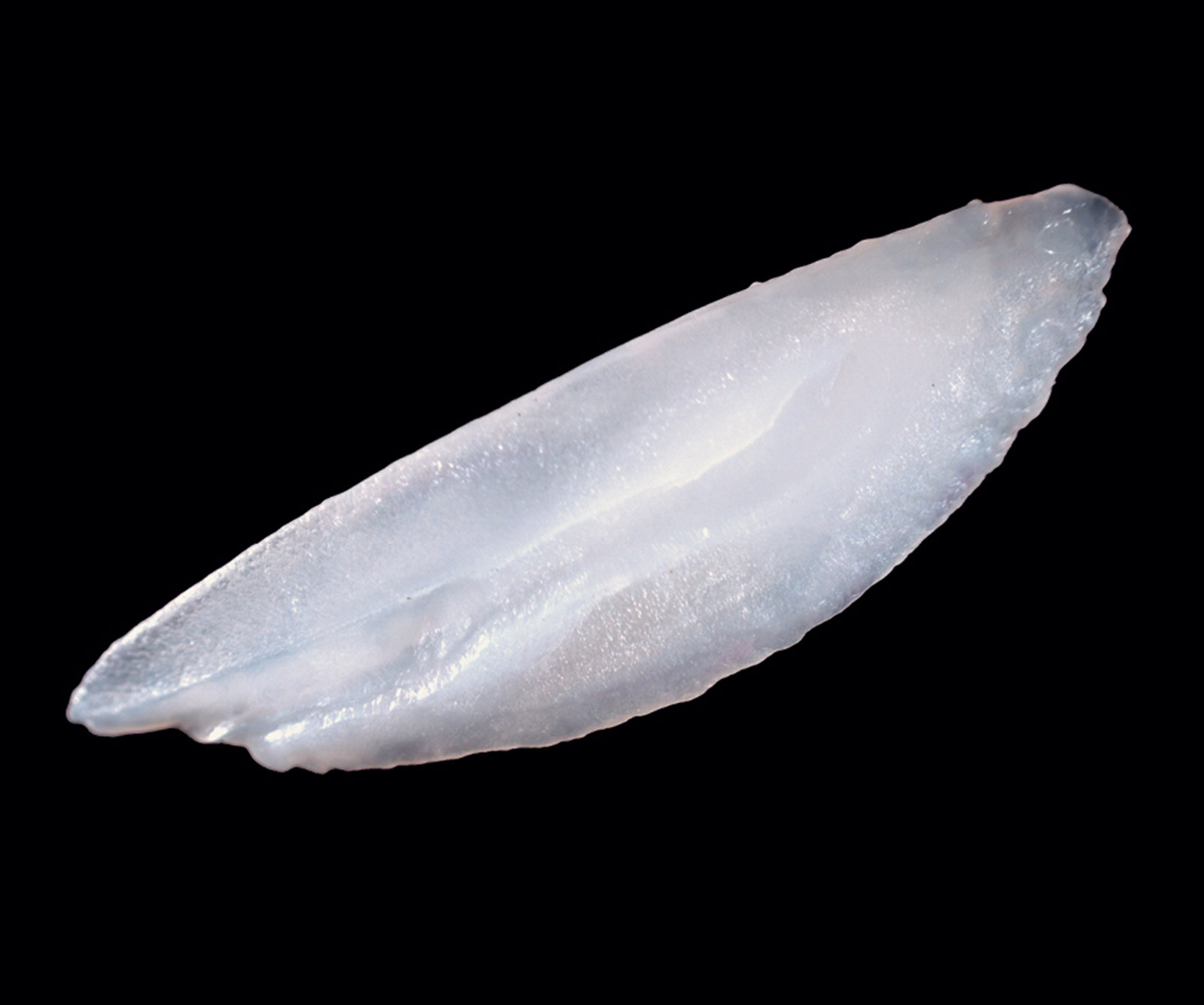
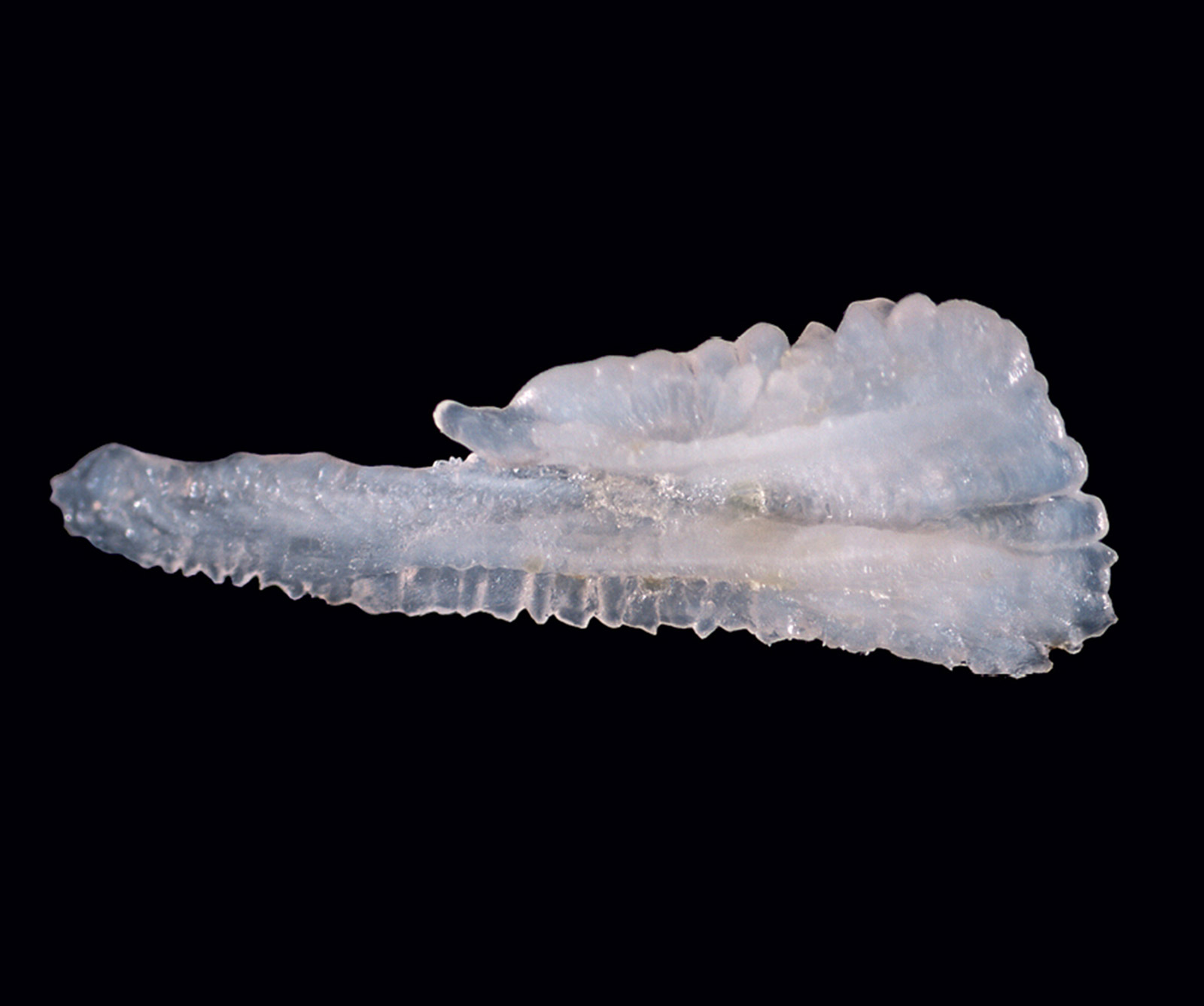
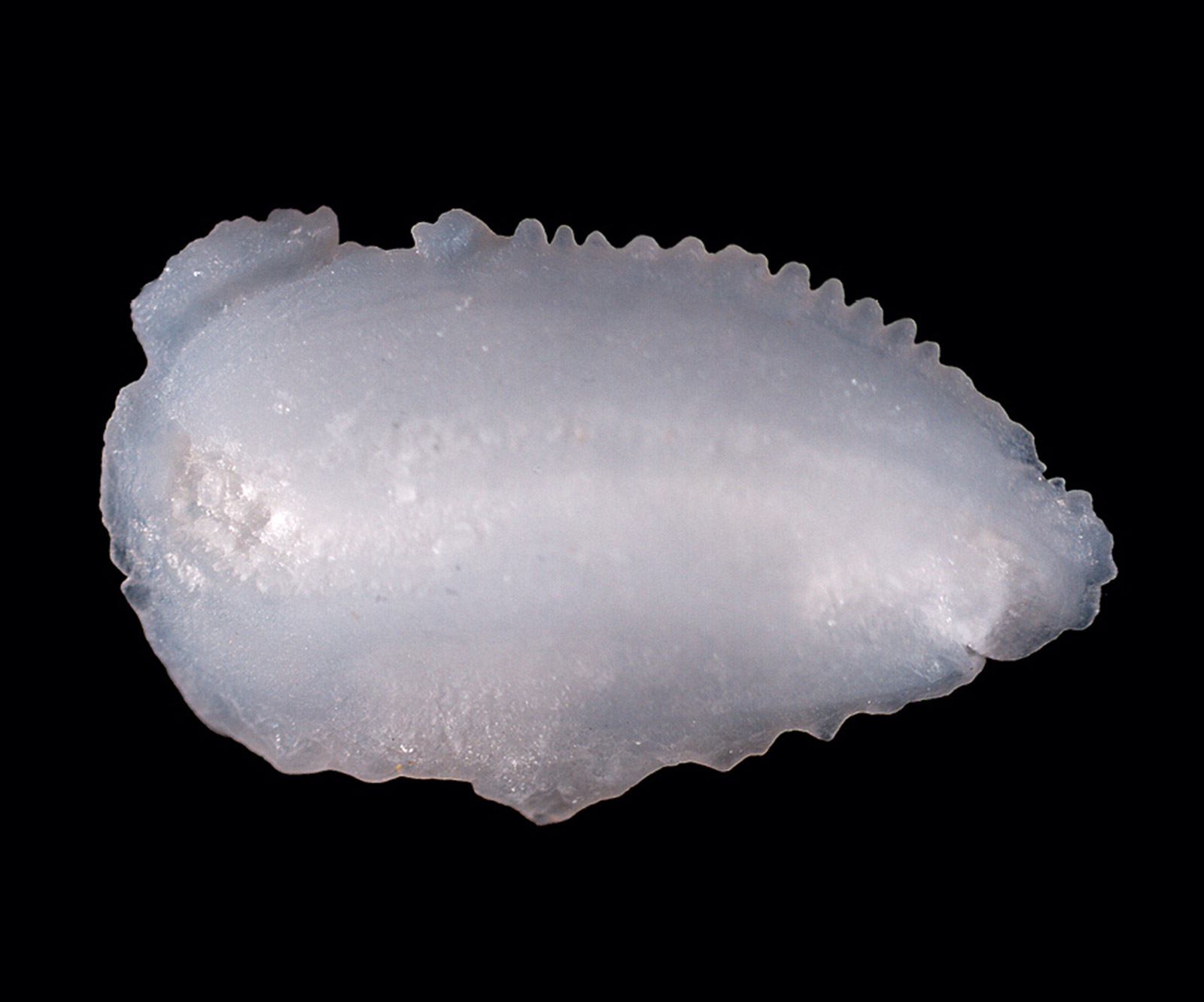
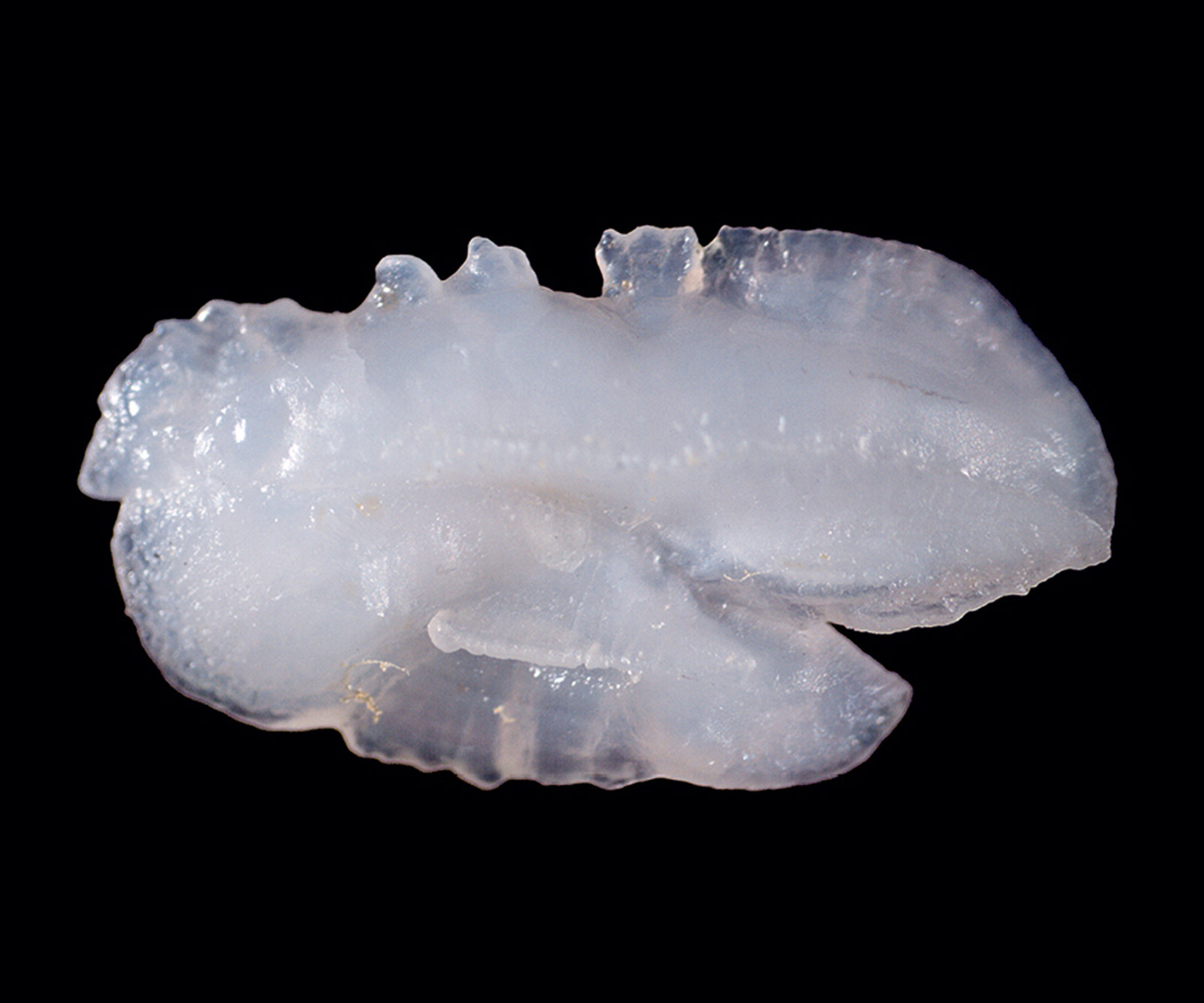
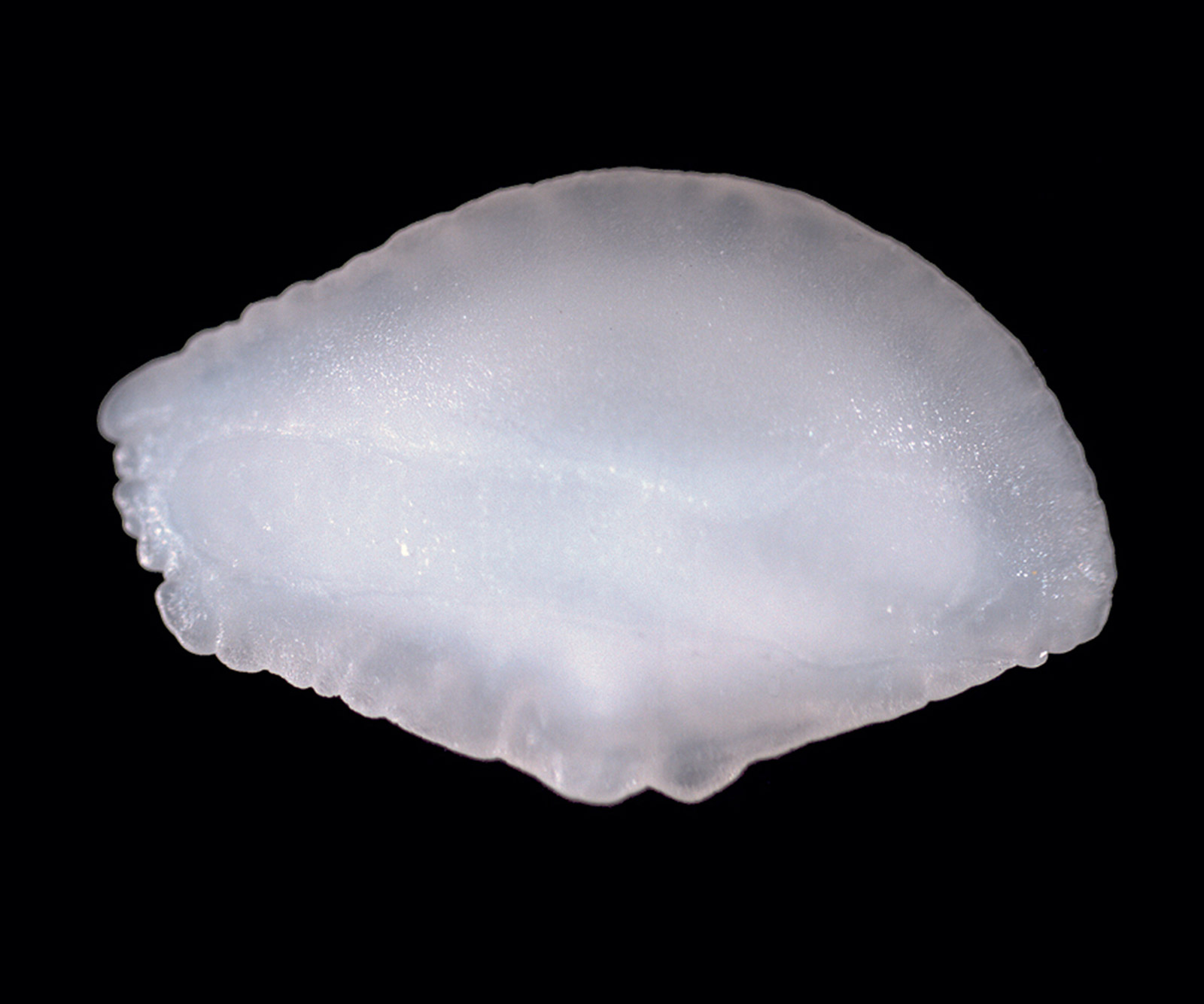
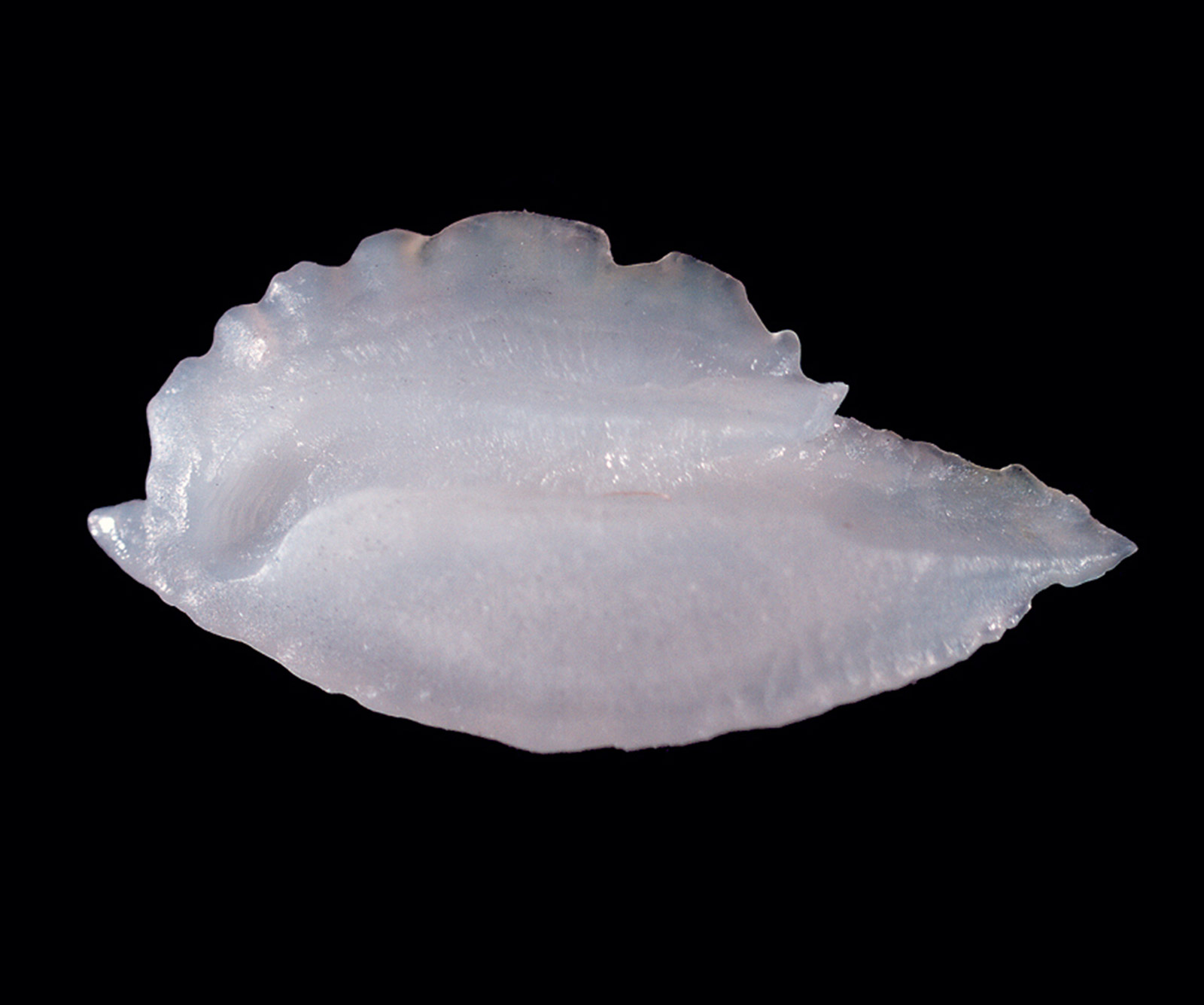
Fish otoliths are among the strangest and most wonderful bits of vertebrate anatomy. They are strikingly sculptural, and their clean surfaces tend to display an alluring opalescent sheen. No one is absolutely sure about all their functions (which would seem to vary from species to species), but it is safe to say that they generally serve in a sensory system very much like the saccule/utricle: they sit atop a mat of sensitive hairs and their sloshing around gives the fish information about its movement in space. Fish that have to deal with complicated spatial environments (reefs, kelp beds) usually have bigger otoliths; those open water predators that stick to swimming fast in straight lines (tuna, billfish) tend to have relatively small ones. Otoliths also seem to play a role in underwater hearing in many species: because they are stone (and therefore of a different specific gravity than the rest of the fish), their vibrations in response to sound waves are out of phase with those of the animal’s body; these differences can be translated into acoustic information. (Interestingly, although hearing in mammals is now handled by a very different system, it has recently been shown that human beings can “hear” very high frequency sounds by means of their otolithic organs, which appear to retain some acoustic sensitivity, despite having been converted almost entirely into sensors for movement and orientation).
There are several thousand researchers around the world who spend their whole working day looking at fish otoliths. This has nothing to do with their physiological functions, however, and everything to do with their structure and the staggering amount of information they contain. In the first place, each species of fish has a unique otolith shape. Couple this with the fact that they are stone (and therefore comparatively resistant to decomposition), and their utility as a biological marker becomes clear. Interested in the food habits of bottlenose whales? Pump their stomachs and you will end up with relatively few bones but lots of otoliths. Find an otolith expert and he or she will be able to give you a menu. Similar work has been done to reconstruct the ecology of seabirds or to determine, using kitchen middens from archaeological sites, the diet of early coast-dwelling humans.
But the true wonder of these peculiar pearls lies within. Should you have occasion to tonsure a snapper or sea bass, slicing off the top of its skull just above the eyes, you might take a moment to remove the two largest otoliths (there are, as a rule, six in all, three on each side) from their velvet seats to the right and left of the brain stem. With the heel of a knife you should be able to snap one of them in two, and then, holding it to the light, you will discern a set of concentric bands. These are growth rings—annuli—which, properly counted, will give the age of your fish in years. This in itself is interesting, and enormously valuable to those who wish to understand the life cycles and population structure of commercial species. But about thirty years ago a curious geologist, tinkering with an otolith (it was a rock, after all), made the truly shocking discovery that those annual layers can be further resolved, microscopically, down to daily layers, layers that contain, in their chemical composition and size, information about the temperature and the salinity of the water through which the fish moved, the food that it ate, and various environmental contaminants it encountered. The result is a stratigraphy unprecedented in the organic world: the diligent student can peruse the otolith of a long-lived deep sea fish, and reconstruct not merely its age, but (and I am barely exaggerating) what it had for breakfast on 6 March 1964, or roughly where it was on the occasion of a particular nuclear test. Not for nothing have those who gather at the biennial “Otolith Olympics” (the insiders’ name for the scientific conference of dedicated otolith researchers) taken to calling the ear stone the “flight recorder” of the piscine world.
And that’s not all. Ever inclined to make an inscription, human beings have figured out how to write their own messages in the heart of the pearl. By sequentially altering the temperature of the water in which salmon fry are hatched and raised, researchers can lay a distinctive “batch label” into the chemical layers of the otolith—a kind of barcode, inscribed in stone, and indelibly preserved within the maturing adult fish (a puckish early student of this technique used it to write “hi mom” in binary inside his experimental animal). Later, when these free-swimming creatures are captured at sea, each can be traced unfailingly to its hatchery of origin. Some five billion Pacific salmon have now been marked in this way, their inner qibla reconfigured to refer to their point of origin, and thus the point to which they seek return.
D. Graham Burnett is an editor of Cabinet, and a historian of science at Princeton University. He is the author of four books, including Trying Leviathan: The Nineteenth-Century New York Court Case that Put the Whale on Trial and Challenged the Order of Nature (Princeton University Press, 2007), which won the 2008 New York City Book Award and the 2008 Hermalyn Prize in Urban History.